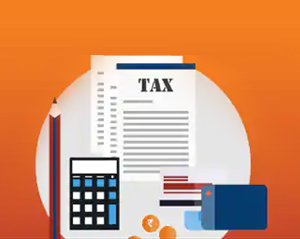Below is a comprehensive guide to walk you through the step-by-step process of how to calculate income tax on salary with an example for better understanding:
Calculating your Gross Income
To know how to calculate tax on salary, you first need to calculate your gross total income. This involves considering various components within your salary structure, such as basic income, bonus, Employee Provident Fund (EPF), House Rent Allowance (HRA), Leave Travel Allowance (LTA) and special allowances such as mobile reimbursements and food coupons.
Reducing Deductions and Determining your Total Income
Reducing deductions is the next pivotal step when you calculate income tax. Some key deductions include the following:
- ₹ 50,000 as standard deduction
- Up to ₹ 1.5 lakh as deduction for various investments and savings instruments under Section 80C of the Income Tax Act, 1961
- Up to ₹ 1 lakh as a deduction on the health insurance premiums and preventive health checkups of up to ₹ 5000 under Section 80D of the Income Tax Act, 1961
- Up to ₹ 10,000 on the interest earned from a bank account under Section 80TTA of the Income Tax Act, 1961
- Up to ₹ 50,000 on the National Pension Scheme (NPS) under Section 80CCD(1B) of the Income Tax Act, 1961
- HRA
- And more
Determining the Total Income
This process involves subtracting all eligible deductions from your gross total income. Depending on your applicable tax slab, you can subtract the standard deduction, applicable deductions and more to arrive at your total income.
Calculating the Taxes Imposed
Tax is calculated on your taxable income as per the following tax slabs and rates:
Below are the income tax slabs for the old tax regime:
Taxpayers under the age of 60
| Income slabs | Tax rate |
|---|---|
| Up to ₹ 2.5 lakh | NIL |
| ₹ 2.5 lakh - ₹ 5 lakh | 5% above ₹ 2.5 lakh |
| ₹ 5 lakh - ₹ 10 lakh | ₹ 12,500 + 20% above ₹ 5 lakh |
| > ₹ 10 lakh | ₹ 1,12,500 + 30% above ₹ 10 lakh |
Taxpayers between the ages of 60 and 80
| Income slabs | Tax rate |
|---|---|
| Up to ₹ 3 lakh | NIL |
| ₹ 3 lakh - ₹ 5 lakh | 5% above ₹ 3 lakh |
| ₹ 5 lakh - ₹ 10 lakh | ₹ 10,000 + 20% above ₹ 5 lakh |
| > ₹ 10 | ₹ 1,10,000 + 30% above ₹ 10 lakh |
Taxpayers over the age of 80
| Income slabs | Tax rate |
|---|---|
| Up to ₹ 5 lakh | NIL |
| ₹ 5 lakh - ₹ 10 lakh | 20% above ₹ 5 lakh |
| > ₹ 10 | ₹ 1,00,000 + 30% above ₹ 10 lakh |
Below are the income tax slabs for the new tax regime:
| Income slabs | Tax rate |
|---|---|
| Up to ₹ 2.5 lakh | NIL |
| ₹ 2,50,001 - ₹ 5 lakh | 5% above ₹ 2,50,000 |
| ₹ 5,00,001 - ₹ 7.5 lakh | ₹ 12,500 + 10% above ₹ 5 lakh |
| ₹ 7,50,001 - ₹ 10 lakh | ₹ 37,500 + 15% above ₹ 7.5 lakh |
| ₹ 10,00,001 - ₹ 12.5 lakh | ₹ 75,000 + 20% above ₹ 10 lakh |
| ₹ 12,50,001 - ₹ 15 lakh | ₹ 1,25,000 + 25% above ₹ 12.5 lakh |
| Above 15 lakhs | ₹ 1,87,500 + 30% above ₹ 15,00,000 |
Consolidating your Net Tax
Below is how you can consolidate your net tax with the help of a tax calculation example:
Below are the income tax slabs for the new tax regime:
| Component | Amount (₹) |
|---|---|
| Gross salary | ₹ 15,50,000 |
| HRA and LTA Deduction | ₹ 2,50,000 |
| Standard deduction | ₹ 50,000 |
| Net salary | ₹ 12,50,000 |
| Income from other sources | ₹ 10,000 |
| Gross taxable income | ₹ 12,60,000 |
| 80C deduction | ₹ 1,50,000 |
| 80CCD(1B) deduction | ₹ 50,000 |
| 80D | ₹ 15,000 |
| 80TTA | ₹ 10,000 |
| Total deductions | ₹ 2,25,000 |
| Total taxable income | ₹ 10,35,000 |
What are the Sources of Income?
Below is a list of incomes considered for the computation of income tax from salary:
- Salaries
- Income from house property
- Profits and gains from business or profession
- Capital gains
- Income from other sources, which includes:
- Dividend income
- Winnings from lotteries, etc.
- Winnings from online games (in the nature of lotteries, etc.)
- Interest on securities
- Rental income of machinery, plant or furniture
- Composite rental income from letting out plant, machinery, furniture
- Sum received under Keyman insurance policy
- Deemed income of a closely held company
- Interest on compensation or enhanced compensation
- Deemed income
Exemption on Total Income Tax
Below are some of the widely used exemptions considered for the computation of income tax from salary:
1. Section 80C
2. Section 80CCC
3. Section 80CCD(1)
4. Section 80CCE
5. Section 80CCD(1B)
6. Section 80CCD(2)
7. Section 80TTA
8. Section 80TTB
9. Section 80GG
10. Section 80E
11. Section 80EEA
12. Section 80D
13. Section 80DD
14. Section 80DDB
15. Section 80U
Deduction for disabled individuals
16. Section 80G
17. Section 80GGB
18. Section 80GGC
19. Section 80RRB
Investments made in equity-linked saving schemes, payments towards life insurance premiums, principal sum of a home loan, PPF and others
Payments made towards pension funds
Payments made towards Atal Pension Yojana or other government-notified pension schemes
Total deduction under Sections 80C, 80CCC and 80CCD(1)
Investments in NPS apart from Section 80CCE
Employer’s contribution towards NPS apart from Section 80CCE
Deduction on interest from savings accounts
Deduction on interest from deposits held by senior citizens
Income tax deduction on house rent paid for assesses does not fall under the deduction for HRA.
Deduction on interest paid on education loan
Deduction in respect of interest on loan taken for certain house property
Deduction on medical insurance premium
Deduction for medical treatment of a dependent with a disability
Deduction for medical treatment for the treatment of specified diseases or ailments
Deduction in respect of donations to certain funds, charitable institutions, etc.
Deduction in respect of contributions given by companies to political parties.
Deduction on donations by a person to political parties
Deduction on income via royalty of a patent
People like you also read ...







